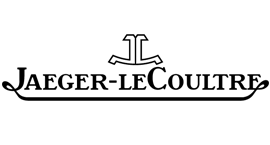The basic function of a watch is to tell time. The kind of time it tells, however, is subject to variation. The kind of time that is the most relevant to us, of course, is the kind that is told in hours, minutes and seconds — the fractional divisions of a solar day based on how long it takes for this planet to rotate once on its axis in relation to the Sun. There is sidereal time, based on Earth’s rotation in relation to the stars. And then you have whatever is going on up there with the moon.
Not a lot of us have a working knowledge of what the moon is actually doing, which is rather surprising, given that it’s our closest significant astronomical neighbour (not counting satellites and space debris). I remember having to explain to someone that the moon doesn’t always come out at night, and that the phenomenon of the new moon occurs because the moon is in the sky at the same time as the sun. Mind-blowing stuff. With the help of specific timepieces, however, we can get to know the behaviour of the moon a little better.

If you own any watch with a moonphase display, you’ll know that on this Thursday, 10 June, we have a new moon. If you happen to be one of the happy owners of the Ulysse Nardin Tellurium Johannes Kepler, one of the highly esoteric Trilogy of Time astronomical watches created by the genius mad scientist Ludvig Oechslin, you’ll also know that the moon is currently near the ecliptic during this time, meaning there is an eclipse event happening somewhere on Earth. Combined with the knowledge that it’s a new moon, you can deduce that it is a solar, not a lunar eclipse.
If you are somehow fortunate enough to have access to the Jaeger-LeCoultre Reverso Hybris Mechanica Calibre 185 “Quadriptyque” — which indicates not only the phase of the moon and its position relative to the ecliptic, but also displays the anomalistic cycle of the moon with apogee and perigee phases, you will know the following. On Thursday 10 June 2021, certain areas on Earth will experience a partial solar eclipse, which at its fullest point will be an annular (and not total) eclipse. You will know this, because the Quadriptyque shows that the moon is currently near apogee, its furthest distance from the Earth. If the moon was at the point in its orbit where it is closest to Earth (known as perigee), it would look larger, and be able to block out the Sun completely, causing a total eclipse. As it is, some places will experience an annular eclipse, which is when the Sun’s apparent diameter extends past the moon, creating a fiery ring in the sky. (Johnny Cash soundtrack optional at this point.)

Of course, if you have a phone or computer with access to the internet, you would know all this without any more effort than typing a few words into a search engine. But it’s more fun with a watch, don’t you think?






